Vibration Characteristics of Flexible Low-frequency Power Transformers Based on the Fluid-solid Coupling Model
-
摘要: 变压器的振动特性反映了变压器的运行状态和健康状况,间接影响系统的稳定性与可靠性。为此,结合某柔性交流输电工程,搭建了20 Hz低频变压器空载运行“振源-油-箱体”的多物理场流固耦合仿真模型,研究了低频变压器的振动特性,并实地测量低频变压器电流及空载时油箱表面的振动特性,以验证仿真模型的正确性。研究结果表明:考虑流固耦合时油箱振动加速度变小,阻尼效应更能精确模拟变压器油箱的振动。与工频变压器相比,20 Hz低频变压器空载运行时相电流谐波幅值较小,且谐波无明显主导次数;油箱振动信号的频谱主要集中在二倍频40 Hz处,高次频谱中160 Hz处振动比较突出;在振动监测点选取方面,铁芯叠积方向上铁芯柱对应箱体的中部测点最具有监测意义,可在避开加强筋等部件影响的同时保证振动信号的收集,该研究可为未来海上柔性低频所用变压器的状态评估提供技术支撑。Abstract: Transformer vibrations indicate their operating status and health, which subtly affects the system stability and reliability. In this paper, linked to a flexible AC transmission project, a simulation model was created for a 20 Hz low-frequency transformer during no-load operation, considering the "vibration source-oil-tank" coupling across multiple physical fields. Moreover, the transformer's vibration traits were studied and the simulation accuracy was confirmed with on-site measurements of the transformer's current and the tank's surface vibrations. Findings show that, in view of decreases in the tank's vibration acceleration in the process of fluid-solid interaction, the damping effects can more precisely mimic the vibrations. Compared to conventional transformers, the 20 Hz low-frequency transformer has smaller harmonic amplitudes in phase current with no dominant frequency; the vibration spectrum mainly focuses on the double-frequency of 40 Hz, with a notable vibration peak at 160 Hz in the higher spectrum. For vibration monitoring, the middle point on the tank corresponding to the core column in the lamination direction is most significant, which can ensure the collection of vibration signals without interference from components such as stiffeners. This research supports the future condition assessment of transformers in offshore flexible low-frequency applications.
-
0. 引言
探索远距离、大容量的柔性低频交流输电方式,是我国未来海上风电发展的关键。低频输电技术通过交交变频装置将50 Hz工频电力降低为非工频进行传输,兼顾了大容量电能输送的优点和一次投资的经济性[1-2]。20世纪初,德国16.7 Hz的铁路机车牵引是低频技术首次在工业领域的应用实践。20世纪90年代,王锡凡院士提出应用于电力系统高压大容量功率传输的低频输电技术。2019年,陈维江院士提出柔性低频交流输电构想,目前杭州柔性低频输电工程实现了首个500 kV供区异步低频互联,为国际首创性技术[3]。
国内外对变压器的振动特性、振动状态评估以及故障检测等开展了大量的研究。在振动特性方面,现有研究表明变压器振动与油箱结构[4]、磁路状态[5]、运行方式[6]以及铁芯绕组的结构[7-9]密不可分。对于不同材料的铁芯,来自河北工业大学的学者分析了超薄晶粒取向硅钢和非晶合金的C型铁芯的振动噪声水平,发现取向硅钢的振动噪声低于非晶合金[10]。文献[11-12]研究了变压器在直流偏磁下的振动特性,得出偏置直流会加剧变压器振动噪声的结论。更有学者计及气隙对振动的影响提出了更为精细化的振动特性模拟方法[13]。沈阳工业大学学者在文献[14]中提出一种基于铁芯振动的阻尼系数,使用磁结构耦合分析变压器铁芯振动的新方法,并且得到了验证。变压器振动评估及故障检测方面,通过小型变压器仿真或实验模拟各种不同类型的故障如铁芯松动[15]、绕组缺陷[16]等,获得故障下的振动信号,采用不同分析方法如基于多特征值[17]、依赖稳态基频和多频下分量占比[18]或是其他结合机器学习、深度学习等的方法[19-22],来建立丰富的变压器状态评估和故障检测模型。
综上所述,目前变压器振动特性的研究主要基于工频变压器,对于低频变压器鲜有报道。频率的改变对变压器部件的电磁和结构设计[23]影响较大,会使得低频变压器的振动特性发生改变。为此,本文以某柔性交流输电工程中20 Hz低频变压器为研究对象,首先构建了考虑流固耦合的20 Hz低频变压器空载运行“振源-油-箱体”多物理场仿真模型,研究了低频变压器的振动特性,包括频谱特性及测点位置研究;其次利用CAAP2008X监测软件获取同站内50 Hz变压器及20 Hz变压器电流波形,同时对低频变安装振动在线监测装置,测量空载条件下变压器箱体表面的振动特性。初步提出低频变压器振动测点选取及振动监测评估策略,以期为未来海上柔性低频所用变压器的状态评估提供技术支撑。
1. 20 Hz低频变压器振动机理
1.1 变压器铁芯振动机理
变压器空载运行时主要是铁芯振动,其主要来源为铁芯材料的磁致伸缩振动及铁芯接缝或叠片之间漏磁通产生的电磁力振动。随着硅钢片的紧密布置,接缝处的漏磁可忽略不计,变压器铁芯振动主要由硅钢片的磁致伸缩特性引起。用磁致伸缩率ε来表示磁致伸缩现象,磁场下,硅钢片的形变满足如下条件:
1LΔL dH=2ε3H2c|H| (1) ε=ΔLL=2εsH2c∫H0|H|dH=εsU2s(ωNSBs)2cos2(ωt) (2) 式中:L为硅钢片实际尺寸;ΔL为最大磁致伸缩量;Hc为矫顽力;ε8为硅钢片饱和磁致伸缩率,其与变压器内部参量的关系表达式如式(2)所示;Us与Bs分别磁通饱和时的电压与磁感应强度;N为绕组匝数,由磁致伸缩引起的铁芯振动加速度为:
a=d2ΔL dt2=−2LεsU2s(NSBs)2cos2ωt (3) 由式(3)可知,变压器铁芯振动集中于励磁频率的偶次倍频,对于20 Hz低频变压器,其铁芯振动主要在基频40 Hz处;实际运行中由于铁芯磁滞曲线非线性的特点,电流中包含k次谐波(k > 1),故在铁芯振动中同样包含了各次谐波分量的振动,且以奇次谐波为主。
1.2 变压器流固耦合理论分析
变压器绝缘油在油箱内的流动及其分布特性主要受质量守恒定律、动量守恒定律和能量守恒定律控制,如式(4)—式(6)所示。
∇ρv=0 (4) ∇ρv+∇p−μ∇2v=F (5) ρcv−∇T=∇(k∇T)+Q (6) 式中:ρ为流体密度;v为流速;F为外部体积力;p为压力;μ为动力黏度;c为比热容;T为温度;k为热导率;Q为体积热源。
在对变压器整体振动的分析过程中,箱体内部油液与结构耦合作用发生于耦合面上,通过建立“振动源-变压器油-箱体”的流固耦合模型,更加准确地分析低频变压器的振动特性。基于流固耦合建模,需要分析低频变压器的生热及散热原理。变压器的热源来自铁芯及绕组损耗所产生的热量,在后续温度场仿真计算中,假设变压器内部的发热较为均匀,则单位热源的体积生热率为:
Qv=Pi/Vi (7) 式中:Qv为热源密度;Pˉi为损耗功率;Vi为热源的等效体积。
本文的研究对象为单相油浸式变压器,绝缘油为主要的散热源,主要冷却方式为自然对流(natural convection, OANA),通过绝缘油的对流将铁芯以及绕组产生的热量散发,从而保证变压器工作在正常温度下。
2. 20 Hz低频变压器振动特性仿真
2.1 低频变压器“振源-油-箱体”仿真搭建
本文依照杭州亭山换频站低频变参数与结构尺寸,搭建20 Hz变压器有限元模型如图 1(c)所示。为了简化模型提高计算效率,搭建时忽略风机油箱等外部件,不考虑铁芯和绕组的加紧件、固定件及倒角等部位。铁芯被视为整体,高低压绕组忽略垫块,等效为圆筒形状。
基于流固耦合方法,对仿真模型内材料进行参数设置,参数如表 1所示。变压器壳体与铁芯绕组的杨氏模量、密度与泊松比等参数受温度变化较小,为常数。变压器油采用流体单元,参考文献[24]设定好流体密度、恒压热容、导热率及动力黏度等相关流体属性参数。
表 1 20 Hz低频变压器材料参数Table 1. 20 Hz transformer material parameters参数 铁芯 绕组 变压器油 杨氏模量E/(109 N·m−2) 200 126 泊松比 0.3 0.34 密度/(kg·m−3) 8 780 8 940 1 055.04−0.58×T−6.4×10−5×T2 恒压热容/(J·(kg·K)−1) 450 385 2 382−13 460×exp(−T/97) 热导率/(W·(m·K) −1) 46 400 0.134 3−8.05×10−5×T 动力黏度/(Pa·s) −2.445 6+1.591×exp(T/241.46) 铁芯采用23QG095型硅钢片,不同频率下铁芯材料的磁化曲线和磁导率等非线性特性差异较大。本研究团队通过实验测试得到了20 Hz下的磁化曲线与磁导率数据,如图 2所示,建立铁芯磁化模型。
模型采用多物理场耦合计算的方法,在磁场、结构力场和流体场共同作用下分析振动特性。在固体和流体传热模块中,热源为铁芯绕组部分的体积损耗密度,热通量选择对流热通量。多物理场中添加非等温流动及流固耦合模块,对油流所产生的影响做较为详细的仿真计算。固体部分的边界条件包括固定约束和载荷施加,流体部分的边界条件包括自然对流的流速和压力条件,设置变压器油为不可压缩流动,箱体内壁设定为无滑移条件。
在网格剖分方面,壳体与铁芯绕组采用较为精细的四面体自定义尺寸剖分,流体部分采用六面体单元网格。在流固耦合界面处即箱壁内测,对网格进行了加密处理,以提高界面处的计算精度。
仿真通过迭代求解流体与固体界面上的力和速度匹配问题,求解过程在线圈几何分析的基础上进行瞬态分析,以捕捉动态振动和流动特性。为对比忽略流固耦合的仿真结果,另搭建模型使变压器油呈静止形态,分析外壳在2种状态下的振动特性。
2.2 低频变压器仿真结果分析
仿真模拟空载运行,初级绕组施加额定电压,产生20 Hz空载电流,次级绕组设置无电流不连接负载。在磁场求解基础上,通过多物理场耦合计算得到铁芯的受力情况,并进一步求得其振动情况,如图 3所示。图 3中左侧为铁芯振动加速度云图,右侧为低频变压器在忽略和考虑流固耦合情况下的箱体振动加速度云图。先着重分析低频下铁芯的振动特性,仿真结果表明,对于单相变压器,绕组缠绕于铁芯柱,铁芯被紧固件固定在箱底底部,因此铁芯柱的振动位移幅度相对较小,其主要振动部位集中在铁芯旁轭处。
取铁芯旁轭中心一点,对其振动加速度特性进行时频域分析,结果如图 4所示。变压器正常运行时,铁芯的位移主要由交变磁场引起,磁力线通过铁轭时产生切向力,产生径向形变。忽略铁芯旁轭轴向及周向振动的原因在于,仿真中没有对铁芯紧固件进行模拟,且将铁芯视为一个整体,不考虑铁芯叠片的叠装工艺和硅钢片绝缘处理对振动的影响,因此轴向和周向上的振动分量几乎为0。从时域图中得到,铁芯最大径向位移加速度为1.268 m/s2,在0.05~0.1 s的一个励磁周期内,铁芯径向位移出现2个正负峰值,证明铁芯振动的主频位于40 Hz处,周期为0.25 s。从频谱图可以看出,铁芯振动以40 Hz频率为主频,与理论分析结果一致,对比得到径向振动幅值最大,且铁芯在160 Hz处的振动大于其余分量。
从图 2展示的箱体振动云图可以看出,箱体上最大振动加速度布点集中在四面箱体的靠中心处,振动加速度向四周呈递减的趋势。对比图 3(a)与图 3(b)可知,忽略流固耦合效应使得变压器箱体的振动只局限于前后箱壁。当考虑变压器油与箱壁之间的耦合效应时,由于变压器油的动态流动特性,箱体侧面及顶壳也出现相应趋势的周期性振动。现取一个振动周期0.025 s内铁芯与箱体上振动加速度的最大值,如图 5所示。一个周期内铁芯振动的加速度均小于油箱表面,并且考虑流固耦合时,油箱表面的最大加速度小于忽略流固耦合时油箱的振动情况。其主要原因为液体具有黏滞阻尼效应,油液与油箱内壁接触面会产生黏滞摩擦现象,这种现象会对壳体振动产生阻尼效应从而减小振动位移量。
为了对比分析低频变压器箱体的振动特性,对变压器箱体一侧设置9个布点,分别是铁芯柱对应的2号监测点及铁芯旁轭对应的1、3号监测点的上中下位置,仿真得到的加速度频谱如图 6所示。图 6中横坐标1—9分别代表20 Hz—180 Hz的倍频分量。模块电压、桥臂电压、电流及交流侧电压、电流波形。产6中,在纵轴0.3数值处设置断点,旨在更直观地显示160 Hz处柱状图形的大小。仿真表明,箱体振动主频率依旧为40 Hz,且同样在8倍频(160 Hz)处谐波含量较为突出。对比不同位置的测点,铁芯柱对应箱体的布点整体上表现出较大的加速度幅值,中部测点的加速度幅值及谐波含量皆大于上部和下部的布点。由于低频变压器底部固定在基底,因此下部布点的振动表现最弱。
综上,本文20 Hz低频变压器“振源-油-箱体”流固耦合模型仿真结论如下:
1)考虑变压器油与油箱之间的耦合作用时,油箱四面和顶壳皆出现周期性振动,并且由于耦合面产生的黏滞摩擦现象,壳体振动振动加速度小于忽略流固耦合的仿真结果,更符合实际理论。
2)单相三柱式低频变压器空载运行时,铁芯和箱体的振动主频均为40 Hz,同时160 Hz处振动幅值较高。铁芯振动部位集中于旁轭处,主要表现为径向振动。箱体振动部位经集中在靠近箱壁中心处,相较其他位置测点,铁芯柱对应箱体测点及中部布点所测得的加速度信号幅值更高。
3. 低频变振动实验设计与结果分析
3.1 低频变压器测振平台
杭州亭山换频站中低频变压器为分相布置,选取1台220 kV低频单相变压器开展振动测试工作,为保证试验同一性,主变在空载工况下运行,变压器基本参数如表 2所示。变压器油箱测点如图 8所示,振动测点主要基于主变振动机理及前期测试经验放置,振动传感器分别放置于2个铁芯柱对应两面箱壁以及箱体左右侧面的位置(图 7中展示①—⑥监测点,右侧及后侧布点分别为⑦—⑨监测点及⑩—⑫监测点),放置时考虑避开加强筋减小测量误差。具体而言,传感器分别在单面上的上部、中部以及接近基座的下部进行定位,同时忽略部分人为无法安装振动传感器的布点。
表 2 单相低频变压器参数表Table 2. Parameters of low frequency transformer参数 数值 型号 DF-110000/220 额定容量 110MVA 额定电压/kV (230/√3)/64 额定频率/Hz 20 短路阻抗/% 15×(1±5%) 冷却方式 ONAN/ONAF 振动传感器采用T95磁吸式加速度传感器,振动信号和加速度信号经放大器放大,送入DH5902N型数据采集振动分析仪进行分析,连接电脑(PC)端得到测点的实时振动信号并可完成快速Fourier变换(fast Fourier transform, FFT)等分析。
3.2 工频、低频变压器相电流对比分析
采用CAAP2008X监测软件对工频变压器和低频变压器进行电流及谐波含量的测量与分析,如图 8及表 3所示。取2台变压器一段时间内的相电流结果进行Fourier分析,发现两者在谐波分布特征上存在着显著差异。
表 3 50 Hz与20H z变压器谐波占比Table 3. Harmonic proportion of 20 Hz and 50 Hz transformer current谐波分量 谐波占比/% 50 Hz变压器 20 Hz变压器 2次 0.19 0.29 3次 1.10 0.48 4次 0.17 0.22 5次 4.31 0.21 6次 0.21 0.14 7次 1.01 0.21 8次 0.05 0.17 9次 0.04 0.14 对于工频变压器,三相电流的谐波含量主要集中在3、5、7次等奇次谐波,其中5次谐波占比最高,为4.31%,呈现出一定的规律性。相反,低频20 Hz变压器的三相电流中,奇偶次谐波并行存在,且没有明显的主导次数,其振动加速度振幅相较工频变压器偏小。
3.3 低频变压器振动实验测试
根据PC端所采集的大量振动时域数据,优先分析箱体中部具有较强表征性的测点,选取1~1.2 s内箱体中部布点振动周期,图 9所示为中部共12个布点的振动加速度时域图。监测点1—3和监测点10—12位于铁芯叠积方向对应箱体的两面,其余测点位于另两侧箱体。
对其两面6个测点进行Fourier分解观察其频谱规律,结果如图 10所示。与距离散热风机较远的2号、11号测点相比,靠近散热风机的1号、3号、10号及12号测点在80 Hz、100 Hz、160 Hz处谐波振动远远大于主频40 Hz处的振动。因此2号和11号测点的振动特性更能反映变压器内部铁芯磁致伸缩的振动特性。
进一步系统地比较低频变压器箱体中部以上、中部以及中部靠下位置的振动情况。鉴于实际操作的局限性,选择便于安装压电式传感器的2号与11号监测点进行实验,对其上、中、下3个部位的振动特性进行测试。从频谱图 11中看出,中部测点相比其他位置测点能更好地反映出低频变压器的振动特性。具体而言,上部监测点的各频谱分量整体略低于中部测点,在80~120 Hz区间内,偏下部的测点各频谱幅值最高。原因在于,变压器上面箱体和变压器铁芯没有直接连结,铁芯振动信号通过油传递,且振动信号传播路径长;而变压器铁芯和箱体底部利用紧固件连结在一起,振动信号更容易传递,更容易受到铁芯紧固件和箱体外部件共振的影响,使得在80~120 Hz范围内的振动幅值偏高。
取分别位于箱体两侧的6号及9号监测点进行上、中、下位置的振动特性对比,其频谱分量的占比数值如表 4所示。同样,中部偏上及靠近底座的监测点受到布点位置及其他因素的影响,其振动频谱与正面测点呈现出一样的趋势。各高次谐波占比中,上部测点振动位移相较偏弱,偏下位置测点的振动幅值最高,甚至在一侧腰部偏下的位置出现了频谱分量极高的情况,如中部偏下9号测点在160 Hz分量处达到了近1.6 m/s2,进一步证实在利用实体变压器箱体振动信号的差异来判断是否存在故障运行时,监测点位置的优化极其重要。
表 4 低频变压器两侧监测点频谱占比对比Table 4. Comparison of frequency spectrum proportions at monitoring points on both sides of 20 Hz transformer监测
位置频谱占比/% 40 Hz 60 Hz 80 Hz 100 Hz 120 Hz 140 Hz 160 Hz 180 Hz 监测点6 上部 5.14 3.39 4.70 6.89 2.62 2.84 65.36 8.52 中部 18.88 6.16 9.91 16.73 0.80 6.29 32.93 6.96 下部 12.28 10.10 16.37 7.92 15.71 10.56 19.34 6.53 监测点9 上部 6.82 1.79 14.04 2.85 2.72 22.52 38.34 10.53 中部 15.00 1.92 20.62 6.77 2.38 32.69 13.31 7.31 下部 2.62 3.42 3.64 3.24 2.00 8.04 68.80 7.51 为了直观展示低频变压器各监测点的振动特性差异,引入R表示各测点振动信号的频谱分布性:
R=F40 HzF60 Hz+F80 Hz+⋯+F180 Hz (8) 式中:F40Hz表示40 Hz处主振动频率的加速度幅值;F60Hz—F180Hz表示倍频分量的振动加速度幅值。
箱体振动信号的基频幅值、谐波分量等会被作为判断故障的依据,故应优先考虑基频振动特性显著的位置,同时避免选择倍频分量幅值较大的布点。可以得到各测点下的R值热力图如图 12所示。其中颜色较深的区域集中在箱体正面布点以及中部和中部偏上的位置,代表较好的频谱分布性。
本研究将低频变压器箱体的仿真振动特性与实验测试结果进行了细致对比。对比分析如下:
1)实验选取布点与仿真相同,所测得的箱体振动信号中,主频均为40 Hz,同时160 Hz处振动幅值较高,与仿真结果一致。
2)与工频变压器相比,20 Hz低频变压器相电流及箱体振动信号含有更为丰富的谐波。变压器的各个组件(如铁芯、线圈、绝缘材料等)都有其固有的频率。当电磁力产生的振动频率接近组件的固有频率时,会发生共振现象,导致振动幅值显著增加。在低频变压器的设计过程中,要避免共振的难度大于常规工频变(100 Hz、200 Hz、300 Hz),油箱的固有频率很难避开30~130 Hz,生产厂家调整了加强结构,避开了共振区间,使油箱固有频率在80~130 Hz区间内。因此从箱体各监测点的振动频谱可以看出,80 Hz以上的占比较高。并且变压器的冷却系统(如风扇、油泵等)在运行时也会产生振动,形成新的谐波分量,从而增加了整体振动的复杂性。
3)在箱体测点选择方面,实验结果也同样验证了仿真的准确性,即在铁芯叠积方向对应的箱体中部,测点在捕捉低频变压器振动信号方面显示出优越性,具有更好的信噪比,这一研究对于优化监测点布局具有重要意义。
4. 结论
1)提出了基于温度-流体多物理场耦合的计算方法,构建了20 Hz油浸式低频变压器流固耦合“振源-油-箱体”三维模型。经仿真分析得出,计及变压器流固耦合作用时,由于耦合面的黏滞阻尼效应,壳体振动振动加速度小于忽略流固耦合的仿真结果,且油箱四面和顶壳皆出现周期性振动,更符合实际理论。
2)20 Hz低频变压器空载条件下,铁芯和箱体的振动主频均为40 Hz,同时160 Hz处振动幅值较高;铁芯振动部位集中于旁轭处,主要表现为径向振动;箱体振动部位集中在靠近箱壁中心处。实验验证了以上结论的正确性。
3)实验证明,与50 Hz工频变压器相比,20 Hz低频变压器相电流谐波分量幅值较低,且无主导次数。同时,低频变压器各部件固有频率集中在80~200 Hz等较低频率,使得箱体的振动难以避开共振区间。
4)进一步提出的选点策略表明,位于铁芯叠积方向对应的箱体中部测点,其振动信号受外部干扰较小,展现出的频谱分布具有较高的信噪比和较好的连续性。
综上,20 Hz低频变压器的振动包含更丰富的谐波分量以及共振的风险,具有深入研究的必要。下一步将考虑海上柔性输电“高湿、高温、高振动”环境下低频变压器的振动特性,为未来海上风电低频变压器的故障诊断和健康评估提供理论基础。
-
表 1 20 Hz低频变压器材料参数
Table 1 20 Hz transformer material parameters
参数 铁芯 绕组 变压器油 杨氏模量E/(109 N·m−2) 200 126 泊松比 0.3 0.34 密度/(kg·m−3) 8 780 8 940 1 055.04−0.58×T−6.4×10−5×T2 恒压热容/(J·(kg·K)−1) 450 385 2 382−13 460×exp(−T/97) 热导率/(W·(m·K) −1) 46 400 0.134 3−8.05×10−5×T 动力黏度/(Pa·s) −2.445 6+1.591×exp(T/241.46) 表 2 单相低频变压器参数表
Table 2 Parameters of low frequency transformer
参数 数值 型号 DF-110000/220 额定容量 110MVA 额定电压/kV (230/)/64 额定频率/Hz 20 短路阻抗/% 15×(1±5%) 冷却方式 ONAN/ONAF 表 3 50 Hz与20H z变压器谐波占比
Table 3 Harmonic proportion of 20 Hz and 50 Hz transformer current
谐波分量 谐波占比/% 50 Hz变压器 20 Hz变压器 2次 0.19 0.29 3次 1.10 0.48 4次 0.17 0.22 5次 4.31 0.21 6次 0.21 0.14 7次 1.01 0.21 8次 0.05 0.17 9次 0.04 0.14 表 4 低频变压器两侧监测点频谱占比对比
Table 4 Comparison of frequency spectrum proportions at monitoring points on both sides of 20 Hz transformer
监测
位置频谱占比/% 40 Hz 60 Hz 80 Hz 100 Hz 120 Hz 140 Hz 160 Hz 180 Hz 监测点6 上部 5.14 3.39 4.70 6.89 2.62 2.84 65.36 8.52 中部 18.88 6.16 9.91 16.73 0.80 6.29 32.93 6.96 下部 12.28 10.10 16.37 7.92 15.71 10.56 19.34 6.53 监测点9 上部 6.82 1.79 14.04 2.85 2.72 22.52 38.34 10.53 中部 15.00 1.92 20.62 6.77 2.38 32.69 13.31 7.31 下部 2.62 3.42 3.64 3.24 2.00 8.04 68.80 7.51 -
[1] 赵国亮, 陈维江, 邓占锋, 等. 柔性低频交流输电关键技术及应用[J]. 电力系统自动化, 2022, 46(15): 1-10. ZHAO Guoliang, CHEN Weijiang, DENG Zhanfeng, et al. Key technologies and application of flexible low-frequency AC transmission[J]. Automation of Electric Power Systems, 2022, 46(15): 1-10.
[2] 尹积军, 吴文传. 浙江构建新型电力系统的技术路径与实践[J]. 中国电机工程学报, 2023, 43(14): 5404-5415. YIN Jijun, WU Wenchuan. Technical path and practice for constructing the new type power system in Zhejiang province[J]. Proceedings of the CSEE, 2023, 43(14): 5404-5415.
[3] 张蕾, 许挺. 世界首个柔性低频输电工程正式落点浙江杭州[J]. 新能源科技, 2021(6): 11. ZHANG Lei, XU Ting. The world's first flexible low-frequency power transmission project officially settles in Hangzhou, Zhejiang[J]. New Energy Technology, 2021(6): 11.
[4] 李岱岩, 张艳丽, 王振, 等. 考虑材料复杂磁特性的铁心形变的磁-机械耦合有限元计算[J]. 中国电机工程学报, 2023, 43(增刊1): 286-294. LI Daiyan, ZHANG Yanli, WANG Zhen, et al. Finite element analysis of the magneto-mechanical coupling for lron coredeformation considering complicated magnetic properties of material[J]. Proceedings of the CSEE, 2023, 43(Supplement 1): 286-294.
[5] CHEN Z W, ZHOU Q P, DING G C, et al. Influence of magnetic state variation on transformer core vibration characteristics and its measurement[J]. IEEE Transactions on Instrumentation and Measurement, 2022, 71: 1-8.
[6] 袁耀, 赵林杰, 杨家辉, 等. ±800 kV换流变压器空载运行振动特性[J]. 中国电机工程学报, 2023, 43(8): 3273-3284. YUAN Yao, ZHAO Linjie, YANG Jiahui, et al. Vibration characteristics of ±800 kV converter transformer under no-load operation[J]. Proceedings of the CSEE, 2023, 43(8): 3273-3284.
[7] 汲胜昌, 何国阳, 李丽, 等. 不同叠片接缝形式的换流变压器铁心电磁与振动特性分析[J]. 高压电器, 2023, 59(10): 110-119, 128. JI Shengchang, HE Guoyang, LI Li, et al. Analysis of electromagnetic and vibration characteristics of converter transformer core with different lamination joint forms[J]. High Voltage Apparatus, 2023, 59(10): 110-119, 128.
[8] ROMARIC K N, LIU D, DU B. Investigation on vibration characteristics of amorphous metal alloy core dry-type distribution transformer[J]. CES Transactions on Electrical Machines and Systems, 2022, 6(3): 324-331. DOI: 10.30941/CESTEMS.2022.00042
[9] 周红军, 赵志刚, 张亚东, 等. 绕组压紧力对变压器油箱振动特性影响的有限元分析[J]. 变压器, 2024, 61(3): 45-51. ZHOU Hongjun, ZHAO Zhigang, ZHANG Yadong, et al. Finite element analysis of influence of winding pressing force on vibration characteristics of transformer oil tank[J]. Transfomer, 2024, 61(3): 45-51.
[10] LI Y J, YANG Z T, ZHANG C G, et al. Vibration and noise measurement of medium-high frequency transformer cores under non-sinusoidal excitation[J]. IEEE Transactions on Magnetics, 2022, 58(8): 1-5. DOI: 10.1109/TMAG.2022.3190443
[11] 李晓华, 褚福源, 时胜寒. 轨道交通对沿线220 kV变电站中性点电流及振动影响[J]. 电工技术学报, 2021, 36(S2): 423-429, 437. LI Xiaohua, CHU Fuyuan, SHI Shenghan. Influence of rail transit on neutral current and vibration of 220 kV substation along the line[J]. Transactions of China Electrotechnical Society, 2021, 36(S2): 423-429, 437.
[12] 李冰, 王泽忠, 刘海波, 等. 直流偏磁下500 kV单相变压器振动噪声的试验研究[J]. 电工技术学报, 2021, 36(13): 2801-2811. LI Bing, WANG Zezhong, LIU Haibo, et al. Experiment on vibro-acoustic characteristic of 500 kV single-phase transformer under DC-bias[J]. Transactions of China Electrotechnical Society, 2021, 36(13): 2801-2811.
[13] 赵小军, 张佳伟, 王浩名, 等. 电-磁-机耦合视域下考虑气隙影响的变压器铁心振动特性精细化模拟方法[J]. 电工技术学报, 2024, 39(14): 4257-4269. ZHAO Xiaojun, ZHANG Jiawei, WANG Haoming, et al. A refined simulation method for the vibration characteristics of transformer core considering the influence of air gap under the perspective of electro-magnetic-mechanical coupling[J]. Transactions of China Electrotechnical Society, 2024, 39(14): 4257-4269.
[14] ZHANG B, YAN N, DU J, et al. A novel approach to investigate the core vibration in power transformers[J]. IEEE Transactions on Magnetics, 2018, PP(11): 1-4.
[15] 曹辰, 路敦林, 徐博文, 等. 基于弹性力学-热力学的变压器铁芯磁致伸缩振动模型与松动故障诊断方法[J]. 高电压技术, 2024, 50(5): 2146-2157. http://hve.epri.sgcc.com.cn/axda1fid8CKSKpMn5Wv8sRZdFkk4RNyK%2BTmhnljnQaXB%2B1LJSTVuf9ZC3%2BIf1r%2Bi?encrypt=1 CAO Chen, LU Dunlin, XU Bowen, et al. Magnetostrictive vibration model and loosening fault diagnosis method of transformer core based on elastodynamics-thermodynamics[J]. High Voltage Engineering, 2024, 50(5): 2146-2157. http://hve.epri.sgcc.com.cn/axda1fid8CKSKpMn5Wv8sRZdFkk4RNyK%2BTmhnljnQaXB%2B1LJSTVuf9ZC3%2BIf1r%2Bi?encrypt=1
[16] 王栋, 詹振宇, 王伟, 等. 换流变压器振动噪声问题研究综述[J]. 电工电能新技术, 2022, 41(11): 28-42. WANG Dong, ZHAN Zhenyu, WANG Wei, et al. Comprehensive review on vibration and noise issues of converter transformers[J]. Advanced Technology of Electrical Engineering and Energy, 2022, 41(11): 28-42.
[17] 杜厚贤, 刘昊, 雷龙武, 等. 基于振动信号多特征值的电力变压器故障检测研究[J]. 电工技术学报, 2023, 38(1): 83-94. DU Houxian, LIU Hao, LEI Longwu, et al. Research on fault detection of power transformers based on multi-feature values of vibration signals[J]. Transactions of China Electrotechnical Society, 2023, 38(1): 83-94.
[18] 汲胜昌, 张凡, 师愉航, 等. 基于振动信号的电力变压器机械状态诊断方法研究综述[J]. 高电压技术, 2020, 46(1): 257-272. http://hve.epri.sgcc.com.cn/axda1fid8CKSKpMn5Wv8sYHD%2BoLvmiWNCFozOgkrBFeBsUHxbKBdDMFVgvX%2BqOGX?encrypt=1 JI Shengchang, ZHANG Fan, SHI Yuhang, et al. Review on vibration-based mechanical condition monitoring in power transformers[J]. High Voltage Engineering, 2020, 46(1): 257-272. http://hve.epri.sgcc.com.cn/axda1fid8CKSKpMn5Wv8sYHD%2BoLvmiWNCFozOgkrBFeBsUHxbKBdDMFVgvX%2BqOGX?encrypt=1
[19] 廖才波, 杨金鑫, 胡雄, 等. 数据与经验混合驱动下的变压器故障分层诊断方法[J]. 高电压技术, 2023, 49(5): 1841-1850. DOI: 10.13336/j.1003-6520.hve.20221839 LIAO Caibo, YANG Jinxin, HU Xiong, et al. Hierarchical diagnosis method for transformer faults driven by mixed data and experience[J]. High Voltage Engineering, 2023, 49(5): 1841-1850. DOI: 10.13336/j.1003-6520.hve.20221839
[20] 朱莉, 汪小豪, 李豪, 等. 不平衡样本下基于变异麻雀搜索算法和改进SMOTE的变压器故障诊断方法[J]. 高电压技术, 2023, 49(12): 4993-5001. http://hve.epri.sgcc.com.cn/axda1fid8CKSKpMn5Wv8sRZdFkk4RNyK%2BTmhnljnQaXJkDY9qE7TAkwONAPUkJm0?encrypt=1 ZHU Li, WANG Xiaohao, LI Hao, et al. Transformer fault diagnosis method based on variation sparrow search algorithm and improved SMOTE under unbalanced samples[J]. High Voltage Technology, 2023, 49(12): 4993-5001. http://hve.epri.sgcc.com.cn/axda1fid8CKSKpMn5Wv8sRZdFkk4RNyK%2BTmhnljnQaXJkDY9qE7TAkwONAPUkJm0?encrypt=1
[21] 康佳宇, 张沈习, 张庆平, 等. 基于ANOVA和BO-SVM的变压器故障诊断方法[J]. 高电压技术, 2023, 49(5): 1882-1891. http://hve.epri.sgcc.com.cn/axda1fid8CKSKpMn5Wv8sRZdFkk4RNyK%2BTmhnljnQaWNcxje_bCodWdJISQghA7K?encrypt=1 KANG Jiayu, ZHANG Shenxi, ZHANG Qingping, et al. Fault diagnosis method of transformer based on ANOVA and BO-SVM[J]. High Voltage Engineering, 2023, 49(05): 1882-1891. http://hve.epri.sgcc.com.cn/axda1fid8CKSKpMn5Wv8sRZdFkk4RNyK%2BTmhnljnQaWNcxje_bCodWdJISQghA7K?encrypt=1
[22] 齐子豪, 仝杰, 张中浩, 等. 基于多粒度知识特征和Transformer网络的电力变压器故障声纹辨识方法[J/OL]. 中国电机工程学报, 2024: 1-13[2024-07-15]. http://kns.cnki.net/kcms/detail/11.2107.TM.20231204.1422.004.html. QI Zihao, TONG Jie, ZHANG Zhonghao, et al. A voiceprint classification method for power transformer fault identification based on multi-granularity knowledge features and transformer network[J/OL]. Proceedings of the CSEE, 2024: 1-13[2024-07-15]. http://kns.cnki.net/kcms/detail/11.2107.TM.20231204.1422.004.html.
[23] 程灵, 马光, 韩钰, 等. 薄规格取向硅钢电磁特性及在中低频率电力装备中的应用[J]. 电工钢, 2022, 4(4): 1-8. CHENG Ling, MA Guang, HAN Yu, et al. Electromagnetic characteristics of thin-gauge grain-oriented silicon steel and its application in medium and low frequency power equipments[J]. Electrical Steel, 2022, 4(4): 1-8.
[24] 寇正, 赵建利, 冯汝明, 等. 基于有限元法的变压器三维流体-温度场耦合仿真分析[J]. 内蒙古电力技术, 2020, 38(5): 14-18. KOU Zheng, ZHAO Jianli, FENG Ruming, et al. Simulation and analysis of three-dimensional fluid-temperature field coupling on transformer based on finite element method[J]. Inner Mongolia Electric Power, 2020, 38(5): 14-18.




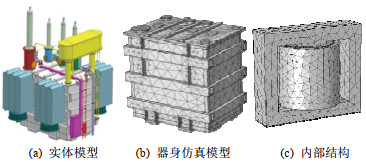
 下载:
下载:
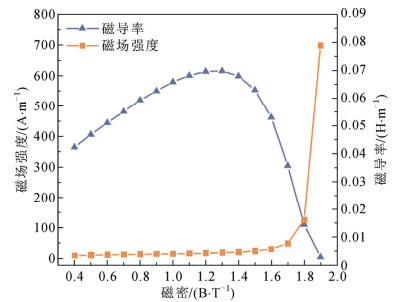
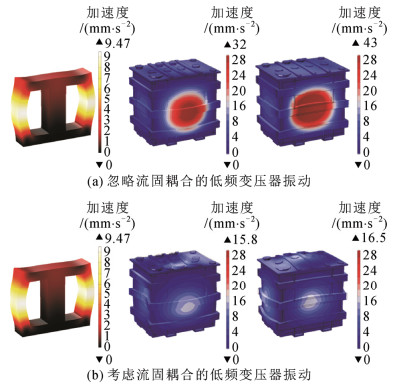
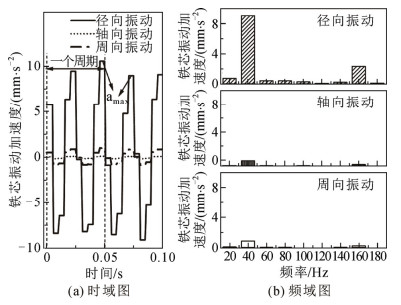
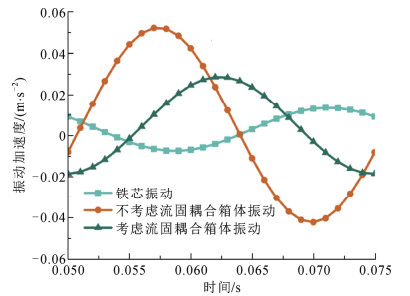

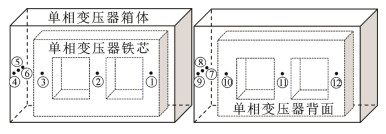
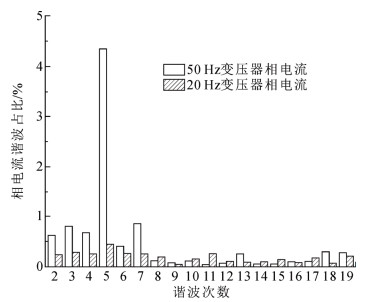
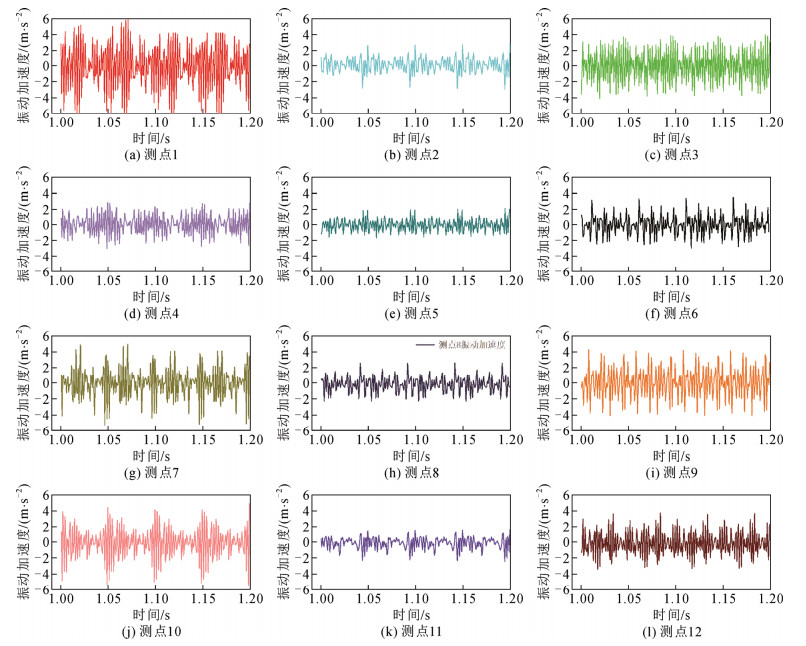
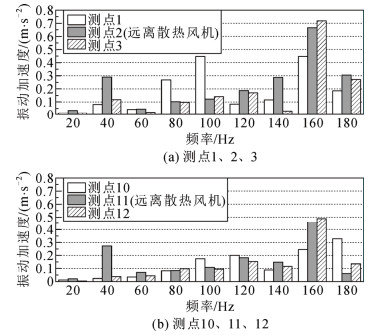
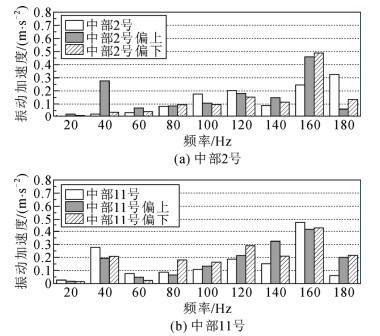
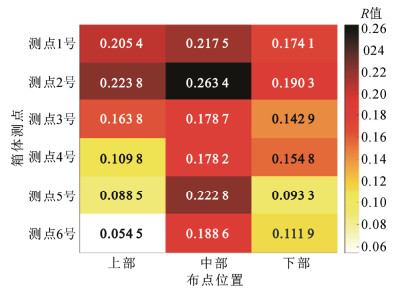
 下载:
下载:



